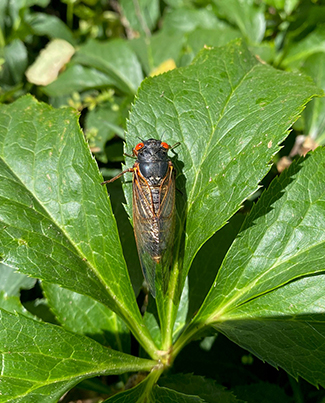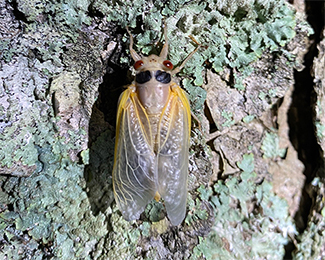Sound of Cicadas: Rare insect emergence brings buzz ‘unlike any in nature’

Contact: Carl Smith
STARKVILLE, Miss.—What’s that sound? Is it the eerie sound of an alien spaceship landing nearby? A white-noise soundtrack for people who have trouble falling asleep? Or is it the distinctive chorus of millions of cicadas emerging to culminate their life cycle? The answer is C, and Mississippi State insect experts say the unusual ambient noise will likely be gone by summer.
In addition to the insects themselves, the emergence of a periodical 13-year cicada brood has brought with it extra noise across the Magnolia State as males search for mates before dying off throughout June.
Video and sound recording by MSU Assistant Professor J. Santos Portugal.
“It’s unlike any sound you hear in nature,” said Blake Layton, an entomology specialist and Extension professor in the Department of Biochemistry, Molecular Biology, Entomology and Plant Pathology. “To me, it sounds like the sound effect you hear from spaceships in an old Star Trek movie.”
“It’s a whirring sound,” added JoVonn Hill, MSU Entomological Museum director and insect taxonomy assistant professor. “It’s a cacophony all through the day. Yesterday, I heard more of a buzzing noise, but today reminded me of white noise.”

Cicadas generate these mating calls by expanding and contracting hollow structures on their bodies called tymbals. The passing of air during this exercise helps reverberate the drum-like structures, which produces the sound. Hill said the current brood has four different species, all having different calls, and Layton said cicadas “sing all day,” from morning to late afternoon. Nighttime insect noises are likely made by katydids, crickets and other bugs, the professors said.
The brood emerged in late April after spending most of their lives underground and feasting on tree roots. They emerge as nymphs—the juvenile stage of their life cycle—and shed their exoskeleton, hanging on tree trunks and other vegetation while their new, adult skin hardens. Cicadas then mate and lay eggs on pencil-sized tree twigs before dying. Once hatched, young cicadas fall to the ground and burrow deep in search of food and safety, continuing the cycle.
“In addition to the noise, you might see more predators around. Cicadas are great meals for a lot of things, especially birds,” Hill said.
For more information on the MSU Entomological Museum and Department of Biochemistry, Molecular Biology, Entomology and Plant Pathology, visit www.mississippientomologicalmuseum.org.msstate.edu and www.biochemistry.msstate.edu. MSU Extension is available online at www.extension.msstate.edu.
Mississippi State University is taking care of what matters.
Learn more at www.msstate.edu.